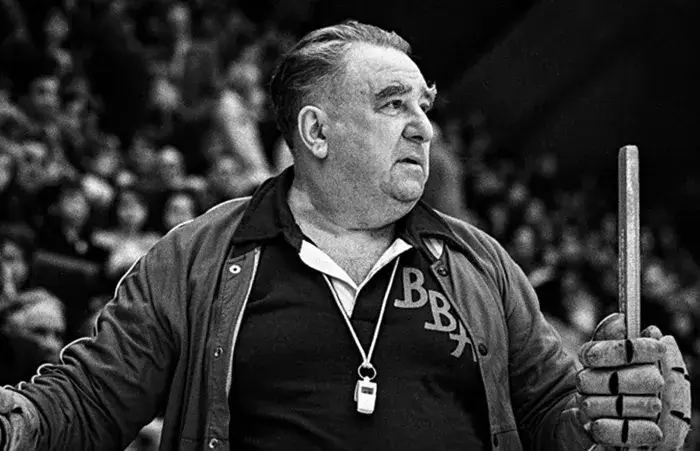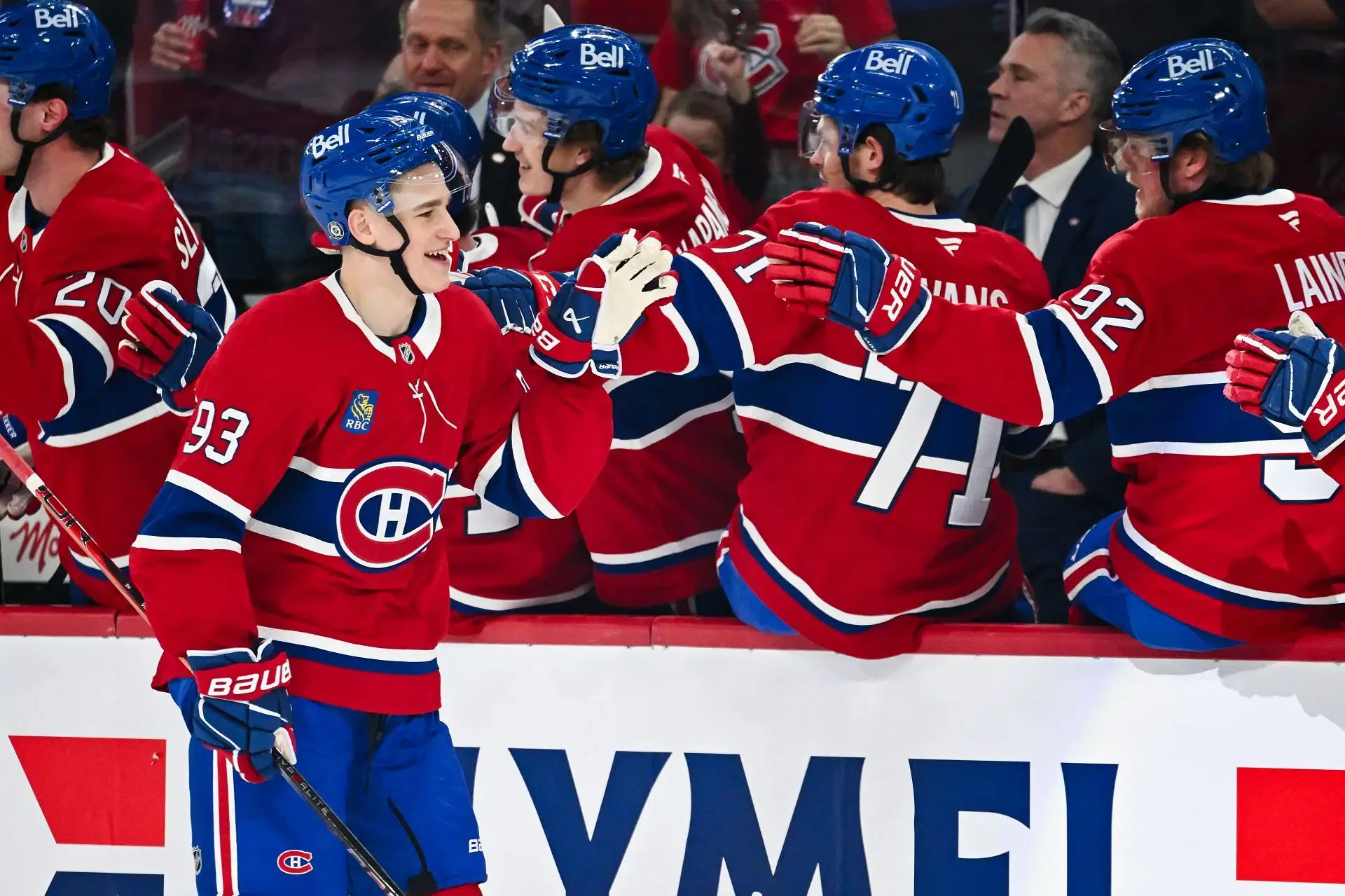Soviet ice hockey is not just a game, but an entire era of victories characterised by the efforts of outstanding mentors. These people combined the genius of strategists with the pedantry of organisers. The best ice hockey coaches in the USSR became the creators of legendary successes and turned the sport into a true national pride. How did they achieve success? What principles enabled them to lead teams to the top of world hockey?
Anatoly Tarasov – the father of the Soviet hockey school
Anatoly Tarasov is one of the best coaches, the founder of the school that brought the USSR the title of hockey superpower. His name became a symbol of innovation and victories on the ice. Under his leadership, the national team conquered not only sporting excellence, but also the hearts of the fans. His methodology of player training and his training philosophy set standards that are still valid today.

The road to great ice hockey: Tarasov’s first steps
Anatoly Tarasov’s career began at a difficult time when ice hockey was just gaining popularity in the Soviet Union. After the Great Patriotic War, the country was looking for new ways to express itself, and sport was one of them. Tarasov not only had to learn the basics of the game, but also adapt it to the realities of the time.
At Dynamo Moscow, he showed how important systematic training was. His team became champions of the USSR for the first time, demonstrating not only physical strength but also a high level of technical preparation. Based on this experience, Tarasov began to lay the foundations for the future success of the national team.
Innovations and working style
Anatoly Tarasov’s methods revolutionised the training of hockey players. His approach was comprehensive: he not only trained the players, but also developed them intellectually. The most important methods include:
- Gymnastic exercises: Strengthening overall coordination, developing balance and agility.
- Football exercises: Improving team co-operation and stamina.
- Chess games: Promoting tactical thinking, analysing game situations.
These elements enabled his protégés to develop into versatile players who could act quickly and effectively.
Tarasov’s legacy in the history of the sport
Tarasov’s legacy can hardly be overestimated. His principles formed the basis for the training of the national team, and his innovative ideas became a role model for future generations. Thanks to his approach, the Soviet hockey school became world-renowned. The best ice hockey coaches in the USSR continued to develop his methods, making their own adaptations but always relying on the foundations he had laid.
Viktor Tikhonov is a symbol of discipline and order
 The name Viktor Tikhonov has come to epitomise strictness, order and absolute control. As one of the best ice hockey coaches in the USSR, he succeeded where others failed. His work with the national team brought the country unprecedented success on the international stage. Tikhonov’s style was characterised by strictness, but it was precisely this that made his teams unrivalled.
The name Viktor Tikhonov has come to epitomise strictness, order and absolute control. As one of the best ice hockey coaches in the USSR, he succeeded where others failed. His work with the national team brought the country unprecedented success on the international stage. Tikhonov’s style was characterised by strictness, but it was precisely this that made his teams unrivalled.
The ‘Iron Mentor’: life and career
Before his appointment as head coach of the USSR national team, Tikhonov proved himself at ZSKA and Dynamo Moscow. His approach to work included a clear organisation of all processes. Every player knew his role and knew how to achieve the goals.
Under Tikhonov’s leadership, the ice hockey players not only trained, they lived ice hockey. All aspects of the game were worked out in training: from tactical manoeuvres to individual skills. His coaching style moulded a generation of players who became world-class stars.
Victories and records of the national team under Tikhonov
The team led by Viktor Tikhonov became a legend. His team won medals at every Olympic Games and most of the world championships.
Most important successes:
- Gold at the 1984, 1988 and 1992 Olympic Games.
- Winning the Canada Cup in 1981, a unique success never before achieved by a European team.
- Seven world championships with a dominant dominance over their opponents.
These victories were the result of a systematic approach and the tough discipline of a mentor.
Transition from the USSR era to the new ice hockey
After the collapse of the Soviet Union, Viktor Tikhonov continued his coaching career. He was able to adapt to the new circumstances while maintaining his old principles. Under his leadership, ZSKA remained one of the strongest clubs in the country. The methods used by Tikhonov are still regarded as an example of successful team management.
Arkady Chernyshev – master of strategy and leadership
Arkady Chernyshev is one of the best ice hockey coaches whose name is forever associated with the victories of the USSR national team. His analytical mind, combination of strict discipline and flexible approach to each player made him a unique mentor whose methods continue to inspire and enthuse.
The brain of great victories
Chernyshev was known for his ability to anticipate opponents’ moves and develop strategic plans that enabled the Soviet national team to win even the most difficult matches. His analytical approach and attention to detail were key factors in their success.
Under his leadership, the team achieved outstanding results:
- Three gold medals at the Olympic Games (1956, 1964, 1968).
- Victories at World Championships, where the USSR dominated for decades.
- A series of successful games against the strongest teams in the world, including Canada and Sweden.
Each victory was the result of meticulous preparation and the precise execution of a planned strategy.
Legendary coaches of Soviet ice hockey and Chernyshev as their symbol
Chernyshev became a mentor for many young coaches who later contributed to the development of ice hockey. His approach was not only to train technical skills, but also to create a unified team in which each player felt part of a whole.
The Soviet hockey school, which was created with Chernyshev’s co-operation, became the benchmark for training. His methods are still relevant today and his name is a symbol of professionalism and leadership.
National pride
 Every name mentioned in this article epitomises the era when Soviet ice hockey was at the forefront of world sport. The best ice hockey coaches of the USSR made an invaluable contribution to the development of the sport and became role models for future generations. Their methods, philosophy and approaches formed a unique school that continues to set standards to this day.
Every name mentioned in this article epitomises the era when Soviet ice hockey was at the forefront of world sport. The best ice hockey coaches of the USSR made an invaluable contribution to the development of the sport and became role models for future generations. Their methods, philosophy and approaches formed a unique school that continues to set standards to this day.

Their achievements are not only gold medals, but also symbols of national unity, determination and the pursuit of perfection. The victories on the international stage were made possible by the hard work, discipline and innovative thinking of their mentors. Today, their legacy lives on in every victory and inspires hockey players to new successes.
 en
en  ru
ru  de
de  ar
ar  es
es  hi
hi  fr
fr  nl
nl  it
it  pt
pt  el
el 



